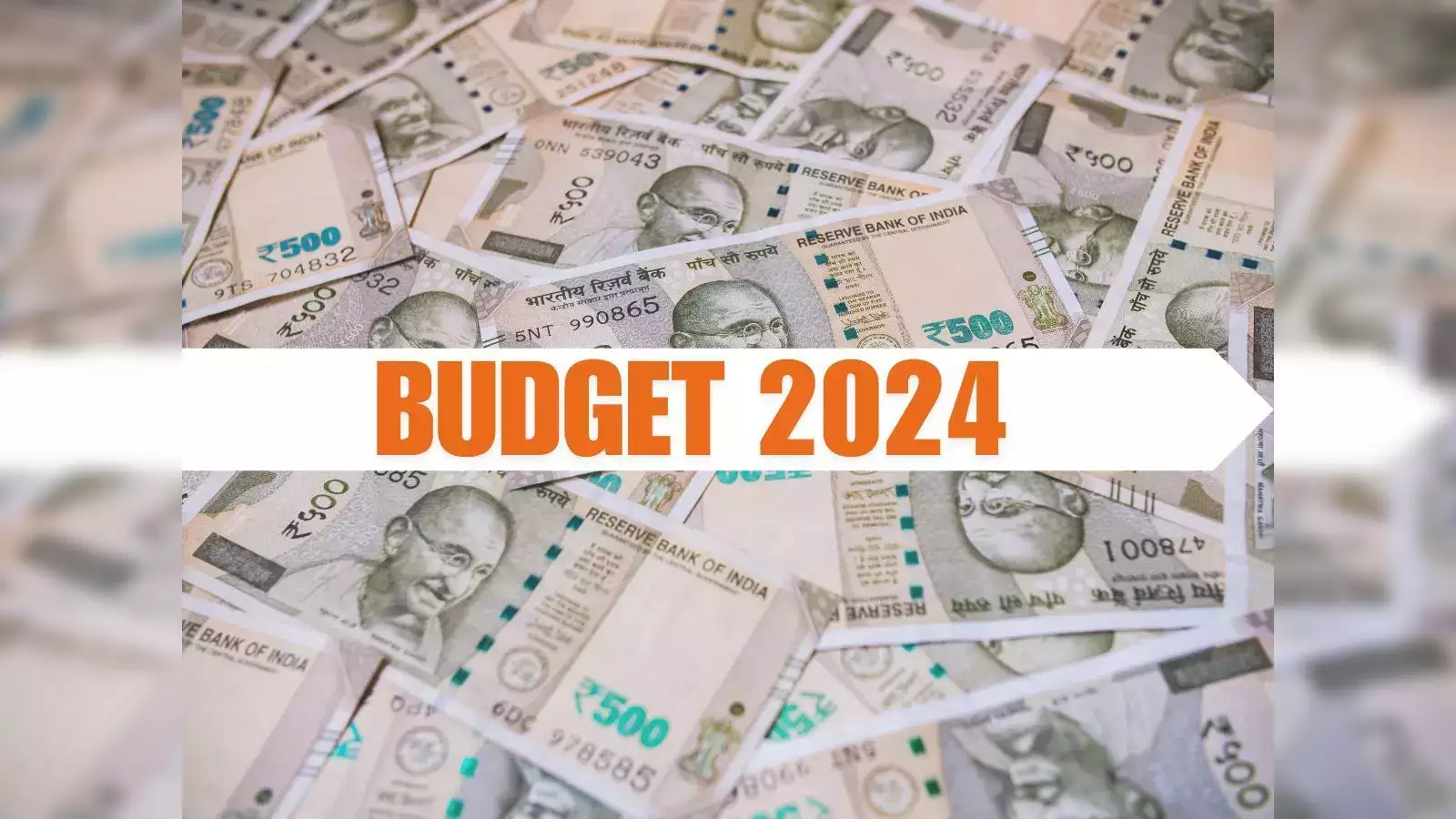Introduction to the Indian Financial Budget 2024
The Indian Financial Budget for the fiscal year 2024 holds significant importance as it sets the economic tone for the country. The budget is a crucial instrument for managing the national economy, influencing various facets such as public expenditure, taxation, and financial regulations. Its primary objectives are to promote economic growth, ensure equitable distribution of income, and maintain fiscal discipline.
This year’s budget is framed against a backdrop of moderate GDP growth, which has seen a slight uptick in recent quarters. Inflation rates remain a concern, with the Reserve Bank of India closely monitoring consumer price indices. The fiscal deficit, a critical indicator of the country’s financial health, has been a focal point for policymakers aiming to balance expenditure with revenue collection.
The formulation of the Indian Financial Budget involves multiple stakeholders, including the Ministry of Finance, the Planning Commission, and various economic advisory councils. These entities collaborate to draft a budget that addresses both short-term economic challenges and long-term developmental goals. The process begins with pre-budget consultations, followed by the presentation of the budget in the Parliament. The timeline of its presentation typically spans from the preparation stages in the preceding year to its approval and implementation in the new fiscal year.
Understanding the context in which the 2024 budget is framed is essential for grasping its implications. The Indian economy has been navigating a complex landscape marked by global economic uncertainties, domestic policy shifts, and evolving geopolitical dynamics. As such, the budget aims to strike a balance between fostering economic resilience and paving the way for sustainable growth.
Key Highlights of the 2024 Budget
The Indian Financial Budget 2024 has introduced several significant announcements and allocations, impacting various sectors, including agriculture, education, healthcare, infrastructure, and defense. One of the pivotal highlights is the enhanced allocation for the agricultural sector, which has seen a 15% increase compared to the previous year. This includes an additional ₹20,000 crore for the Pradhan Mantri Fasal Bima Yojana, aimed at providing comprehensive insurance coverage to farmers against crop failure due to natural calamities.

In the realm of education, the budget has earmarked ₹1.2 lakh crore, marking a substantial 10% rise from the last fiscal year. This allocation focuses on improving digital infrastructure in schools, expanding scholarships for underprivileged students, and enhancing teacher training programs. The government has also introduced the National Digital Education Mission, which aims to integrate technology in classrooms and promote remote learning across rural areas.
The healthcare sector has received a significant boost with an allocation of ₹2.5 lakh crore, up by 20% from the previous year. This includes funding for the establishment of 50 new AIIMS-like institutions and the expansion of the Ayushman Bharat scheme to cover more beneficiaries. Additionally, the budget emphasizes the necessity of improving healthcare infrastructure in rural areas, with a dedicated fund of ₹30,000 crore for primary health centers.
Infrastructure development continues to be a priority, with the government allocating ₹5 lakh crore for various projects, including the construction of new highways, railways, and urban public transport systems. The focus is on enhancing connectivity and promoting sustainable development through green energy initiatives. A significant portion of this budget is dedicated to the National Infrastructure Pipeline, which aims to stimulate economic growth by creating jobs and improving logistics.
In defense, the budget has allocated ₹4.8 lakh crore, reflecting a 12% increase aimed at modernizing the armed forces and strengthening national security. This includes investments in new technology, procurement of advanced weaponry, and infrastructure improvements for defense personnel.
Tax policy changes have also been a focal point, with the introduction of a new simplified tax regime for individuals and small businesses. The government has increased the basic exemption limit and introduced additional deductions to encourage savings and investments. Furthermore, subsidies for renewable energy projects have been extended to promote a greener economy.
Among the new initiatives, the government has launched the “Atmanirbhar Bharat Innovation Fund,” which will provide ₹10,000 crore to startups and MSMEs to foster innovation and entrepreneurship. Additionally, the budget outlines a comprehensive plan to tackle climate change, with a dedicated fund of ₹50,000 crore for environmental sustainability projects.
Impact on Different Sectors and the Economy
As the Indian Financial Budget 2024 is unveiled, its ramifications on various sectors of the economy are being closely scrutinized. The manufacturing sector, often seen as the backbone of the Indian economy, stands to benefit from increased allocations toward infrastructure development and modernization. This move is anticipated to boost production capacities and enhance global competitiveness. However, challenges such as compliance with new regulatory frameworks and the need for workforce upskilling cannot be overlooked.
The technology sector is poised for accelerated growth, thanks to proposed investments in digital infrastructure and innovation. Initiatives to promote research and development, coupled with tax incentives for tech startups, could catalyze a new wave of technological advancements. Nevertheless, cybersecurity and data privacy issues remain areas of concern that need addressing.
Real estate is another sector likely to experience significant changes. The budget’s focus on affordable housing and urban development may spur growth in residential projects. However, the real estate market must navigate potential challenges like rising construction costs and stringent environmental regulations.
The finance sector, particularly banking and non-banking financial companies (NBFCs), is expected to witness a positive impact from measures aimed at enhancing liquidity and credit availability. Steps to improve financial inclusion and digital banking could further strengthen the sector. Yet, the sector must remain vigilant about non-performing assets and regulatory compliance.
For small and medium enterprises (SMEs) and startups, the budget introduces several supportive measures, including eased access to credit, tax reliefs, and incentives for innovation. These steps are designed to foster entrepreneurship and job creation, although SMEs may still face hurdles like market competition and scalability issues.
On a broader scale, the budget’s implications extend to economic growth, investment, consumer spending, and inflation. Expert forecasts suggest a potential uptick in GDP growth, driven by increased public and private investments. Enhanced consumer confidence could spur spending, although inflationary pressures need to be monitored carefully to ensure economic stability.
In summary, while the Indian Financial Budget 2024 presents numerous opportunities for growth and development across various sectors, it also brings forth challenges that must be adeptly managed to realize its full potential. Balancing these dynamics will be crucial for achieving sustainable economic progress.
Public and Expert Reactions
The announcement of the Indian Financial Budget 2024 has elicited a range of reactions from various stakeholders, including the general public, industry leaders, economists, and political figures. Overall, the sentiment surrounding the budget appears to be mixed, with certain measures being praised while others face significant scrutiny.
The general public’s response has been varied. Many citizens appreciate the government’s efforts to boost social welfare programs and increase spending on healthcare and education. However, there are concerns about rising taxes and the potential impact on the cost of living. Social media platforms have seen a surge in discussions, with hashtags related to the budget trending as people express their support or dissatisfaction.
Industry leaders have also weighed in, with some praising the budget for its focus on infrastructure development and digital transformation. Rajesh Kumar, CEO of a leading tech firm, remarked, “The budget’s emphasis on digital infrastructure is a welcome move that will drive innovation and growth in the tech sector.” On the other hand, some business leaders are concerned about the lack of substantial incentives for small and medium enterprises (SMEs), which they believe are crucial for economic recovery.
Economists have provided nuanced analyses of the budget. Dr. Anjali Mehta, a prominent economist, stated, “While the increased allocation for healthcare and education is commendable, the budget does not address the underlying structural issues in the economy. The fiscal deficit target seems ambitious and may require stringent measures to achieve.” This sentiment reflects a cautious optimism tempered by concerns about the feasibility of certain targets.
Political figures have also been vocal, with opposition parties criticizing the budget for not adequately addressing unemployment and income inequality. The leader of the main opposition party, Rahul Sharma, commented, “This budget fails to provide a clear roadmap for job creation and does little to support the middle class, who are struggling with inflation.” In contrast, members of the ruling party have defended the budget, highlighting its focus on long-term economic growth and sustainability.
Media coverage has been extensive, with prominent news outlets providing in-depth analyses and opinion pieces. Several publications have highlighted both the positive aspects and the criticisms, offering a balanced view of the budget’s potential impact. Social media trends reflect the public’s engagement, with many users sharing infographics, memes, and detailed threads dissecting various aspects of the budget.
In conclusion, the Indian Financial Budget 2024 has sparked significant debate and discussion among different stakeholders. The immediate reception indicates a blend of optimism and skepticism, with long-term reactions yet to unfold as the measures take effect.



